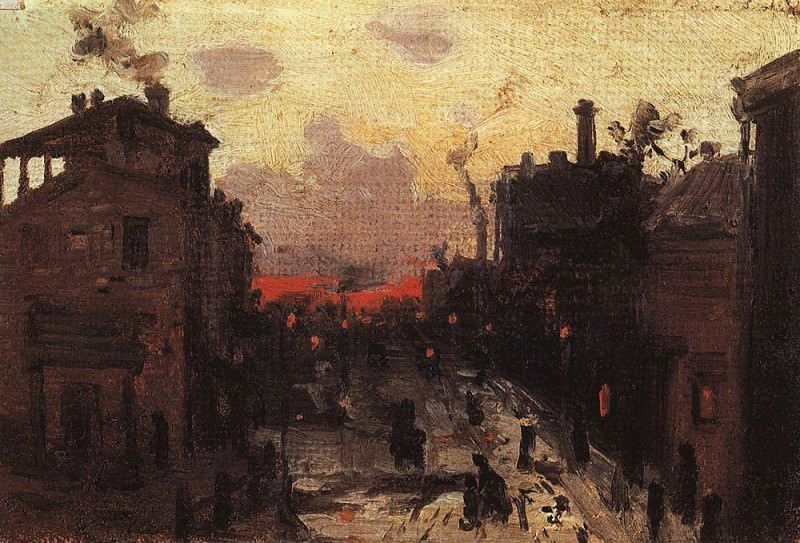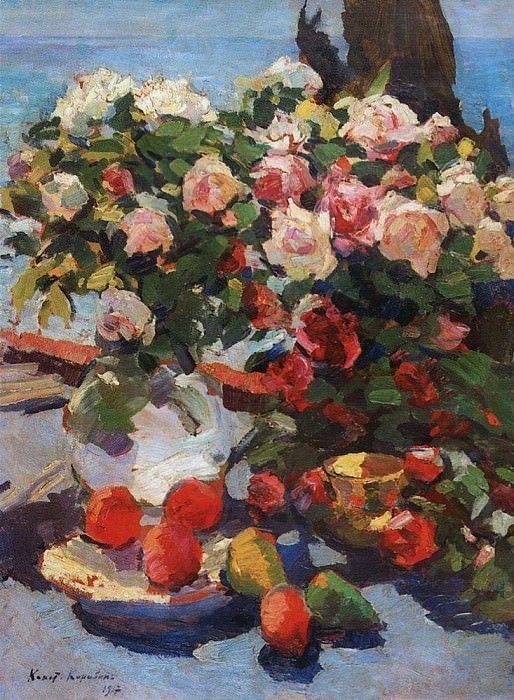Konstantin Alekseevich Korovin: The Luminous Impressionist of Russia

The realm of Russian fine art boasts a constellation of stellar artists who have made a significant impact on the cultural landscape both domestically and internationally. Among these luminous figures, Konstantin Alekseevich Korovin (1861-1939) occupies a special place as one of the foremost Russian impressionists, whose vibrant and innovative works bridged the worlds of Realism and Symbolism and paved the way for modern artistic expression in Russia.

Early Life and Education:
Born in Moscow to a merchant family, Konstantin Korovin displayed a proclivity for drawing from a young age. His brother, Sergey Korovin, also became a notable realist painter. Though initially persuaded to pursue a career in commerce, Konstantin's passion for art could not be subdued, and he eventually enrolled in the Moscow School of Painting, Sculpture and Architecture. There, he was greatly influenced by his teacher, the renowned realist painter Vasily Perov, and later by Alexei Savrasov, whose lyrical landscapes further inspired Korovin's love for the natural world.

Exploration and Experimentation:
Korovin's artistic journey took a decisive turn during his travels to Paris in the 1880s, where he became captivated by the burgeoning Impressionist movement. The works of Claude Monet, Camille Pissarro, and Pierre-Auguste Renoir made a lasting impression on him, leading him to embrace a freer, more vibrant use of color and a greater interest in capturing the fleeting effects of light in his paintings.

Upon returning to Russia, Korovin began to apply the impressionist techniques to Russian subjects, masterfully blending the French style with the Russian spirit. He depicted a wide range of scenes, from the bustling streets of Moscow to the serene landscapes of the north, with an ever-present fascination for the changing moods and atmospheric conditions of different environments.

Scenic Design and Later Works:
Korovin's talents were not limited to the canvas; he was also a gifted stage designer, working closely with the famous director Konstantin Stanislavski at the Moscow Art Theatre. His innovative set designs for operas and plays contributed significantly to the theatre's visual aesthetic and helped establish its reputation as a leading cultural institution.

During the later years of his life, Korovin continued to paint, though he faced numerous hardships, including the Russian Revolution and two World Wars. Despite the changing cultural climate and political turmoil, he never lost his passion for beauty and continued to experiment with new styles and methods until his death in 1939.

Legacy:
Korovin's contribution to Russian art cannot be overstated. As an ambassador of Impressionism, he introduced a new visual language that spoke to the emotions and senses, challenging the academic traditions of his time. His work paved the way for future generations of Russian painters to explore bolder, more expressive means of artistic communication.

Today, Konstantin Korovin's work is celebrated in museums and galleries around the world, admired for its vivid portrayal of the Russian milieu suffused with a universal sense of light and color. His ability to blend the influences of Western art movements with the unique character of his homeland has solidified his position as one of the great pioneers of Russian Impressionism, and his luminous canvases continue to enchant art lovers to this day.
Теги
art.